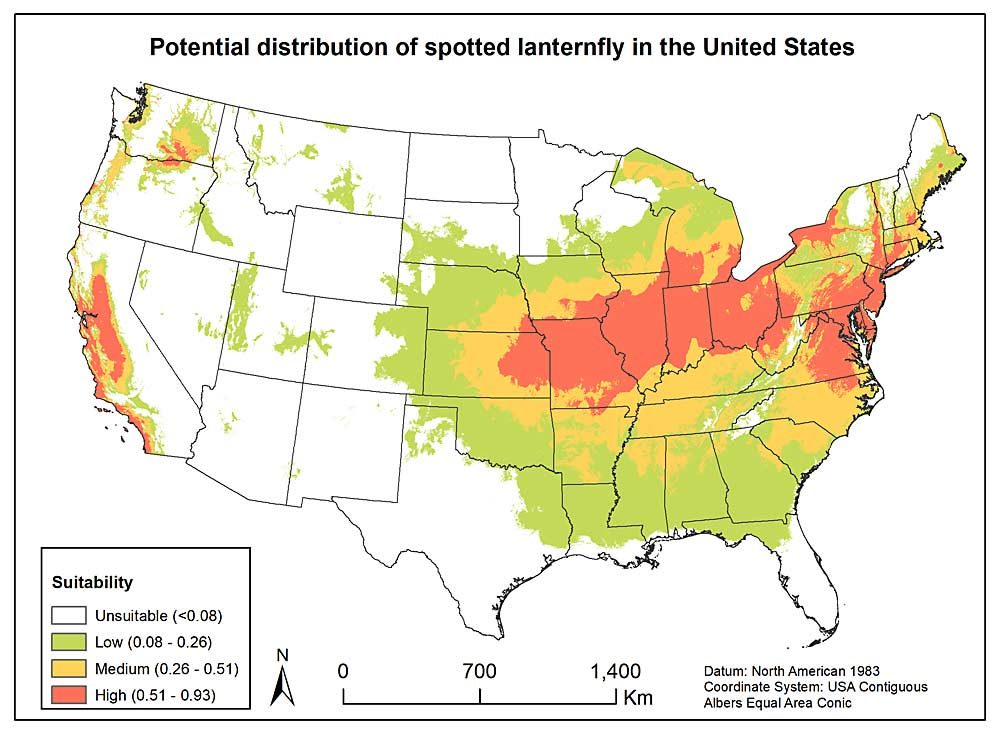
The invasive spotted lanternfly — a leafhopper which has proven to be a devastating vineyard pest in Pennsylvania — would feel right at home in the West Coast’s major wine regions.
That’s according to a new model of the SLF’s potential habitat, published last week by the entomologists at the U.S. Department of Agriculture’s Agricultural Research Service based in Wapato, Washington.
It’s native to China, but it could establish in most of New England, the Mid-Atlantic, the central U.S. states and the Pacific Coast, according to the model and a news release from the ARS.
The swarm-feeding sapsucker seems to pose a particular threat to grapevines, at least in the past few years since it was discovered in Eastern Pennsylvania in 2014, but it can also feed on fruit trees, hops and hardwoods. Quarantines are in place, but the pest has been found in New Jersey, Virginia and Delaware as well.
SLF poses an extreme risk because it’s a natural hitchhiker, laying gray egg masses indiscriminately, including on trucks and trains, Washington State Department of Agriculture entomologist Sven-Erik Spichiger warned the Good Fruit Grower earlier this year.
Growers everywhere should keep an eye out for the pest, which in its adult stage has bright red underwings that give the gray spotted wings a rosy tint when crawling up a tree. The wingless nymphs are black with white spots that turn red as they mature. •
—by Kate Prengaman
Related:
—Spotted lantern fly a new grape threat
—On the lookout for spotted lanternfly






Leave A Comment